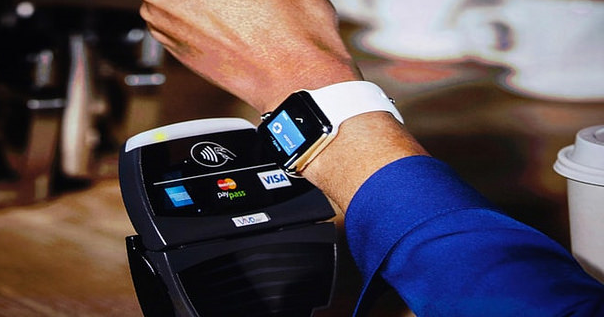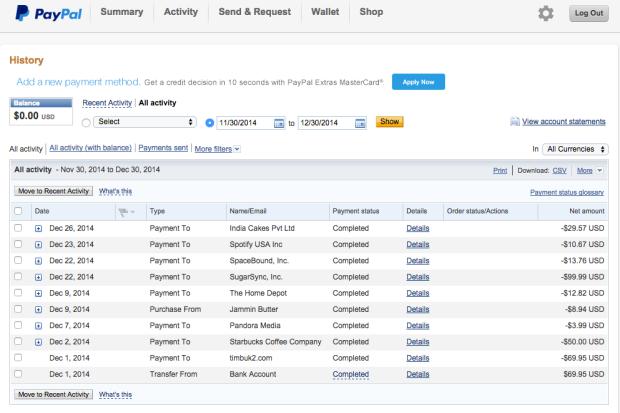
There, I said it. It’s an inside joke amongst the payments industry folks to guess which year might be the year when Mobile Payments finally becomes mainstream. It may seem with the highly promoted launch of Apple Pay, we may have finally put a rest to the claim that 2015 is the year when mobile payments finally hit mainstream.
Maybe Not.
For all intents and purposes I feel Apple Pay, with its marketing momentum, managed to make the general public take notice of mobile payments. However, with Apple finally decided to get into the ring, it managed to make the other failed efforts combine forces together to finally put up a fight. I see the playing field with four major players.
- Apple Pay with NFC
- Google Wallet with NFC (Android Pay?)
- MCX/CurrentC/PayPal/Paydiant Wallet
- Samsung Pay (With Loop’s MST and NFC)
Each of these players have their own strengths to polarize the market in their own way. Lets dive in!
ApplePay:
Strengths: Best User Experience for making mobile payments in the current landscape. Pioneered the concept of tokenization and biometrics to provide a new easy way to pay. Brought all the payment networks and banks to execute a near textbook perfect launch.
Weaknesses: Merchant Adoption. As we see more merchants adopting NFC enabled terminals (and the EMV liability shift in 2015), the number of locations where you use Apple Pay will grow. However, don’t expect to use Apple Pay in your neighborhood Walmart anytime soon.
Not having any rewards programs to brag about is another limitation with Apple Pay.
Add to this the other side of Mobile phone pie, the Android user ecosystem who zealously hate anything Apple Makes. These folks will never use Apple Pay, no matter what.
Opportunities: As more of the newer iPhones get sold, Apple Pay will gain traction and people will try it atleast once to see how this works.
Threat: Industry analyst Cherian Abraham has been blogging about the fraud activities generated by ApplePay. Even though none of this has anything to do with the security measures Apple put in place in designing Apple Pay, the soft underbelly of the whole scheme is the Yellow Path for provisioning cards for users. Banks were forced to launch AP without much time to account for this newer security threats and that may slow some of the momentum.
My take: I would equate the launch of Apple Pay to Tesla’s Model S launch. Both were revolutionary products in their own respect. They broke the convention in their areas where common wisdom dictated that it could not be easily done. However, any first generation product there may be some quality issues which may get ironed out as future versions are released. Apple Pay is surprisingly a solid offering for v1 and it can only get better.
2. Google Wallet with NFC (Android Pay?)
I don’t even know where to start with this. Google Wallet has languished forever mostly due to Google’s approach in not building partnerships with the players in the field. Finally the stars aligned for Google Wallet after the Apple Pay launch and lit up the much needed fire in their back to get their act together. Google was able to broker a partnership with Softcard and provide its new wallet offering as an API.
Strengths: Launching Android Pay as a payment API (See Sundar Pichai’s remarks here) is a wise move. This allows Google to open up the API to device manufacturers and developers to build wallets which may result in mainstream adoption. Apple’s walled garden approach would have never worked for Google in the first place. Android has a healthy user base in US who may try this service.
Weaknesses: Design by committee never produces mind blowing user experiences. Apple Pay set a very high bar(See Tim Cook launch Video here). I cannot imagine how the Android Pay UX can be any simpler than this given the fact that it has to work on a multitude of devices made by different manufacturers. The rev. share scheme Google has promised the Telcos to pre-install Google Wallet in newer handsets sounds like something which needs to be vetted after product launch to see how successful it may be in the long run.
Opportunities: Android has an 80% worldwide market share (source). With an open API approach, Google is betting on sheer volume of its users to make this a success. When you thrown in enough magic potion in the cauldron, you never know what may come out 🙂
Threats: Not having the first movers advantage sometimes may come back and bite you. Apple Pay was able to alleviate this shortcoming with an amazing UX. With Android’s open model and fragmented ecosystem, the success of Android Pay may not be imminent. If history is any indicator, the ARPU(Avg. Rev. Per User) for Android is one quarter of iOS users (according to Benedict Evans analysis here).
My Take: Android Pay maybe late to the party but it surely provides an alternative for Apple Pay. How successful this may be is something we will have to wait to see.
3. MCX/CurrentC/PayPal/Paydiant Wallet
Its hard to analyze a wallet only a few have used in Beta. However, the PayPal acquisition of Paydiant came as a surprise and caught most of us off guard. We well knew MCX was working with FIS/Paydiant to use their QR code technology to payments. The QR-Code premise was very promising when all of the industry pundits declared NFC dead (including me). Add some Apple juice and suddenly we see a re-animated NFC becoming the de-facto payments standard.
The QR-code method of payments is still not bad. We use it in Starbucks everyday and most people do not have any issues paying using QR-Codes. However the entire premise of CurrentC wallet which tries to remove payment networks from the picture (atleast in the first iteration) seems like a dicey proposition for a successful launch. From a consumer point of view, I do not understand why a customer would be motivated to link their bank accounts to save interchange fees for a merchant.
4. Samsung Pay (With Loop’s MST and NFC)
Talk about bad timing and possibly some buyer’s remorse. Samsung acquired LoopPay which would provide out of the box support to use existing POS terminals using the Magnetic Secure Transmission technology. While many rumored a marriage between these two companies could have provided a great mobile wallet in Samsung phones, this comes a year too late. With the EMV liability shift fast approaching, many merchants are upgrading their terminals. The concept of swipe as we know may go the way of dodo pretty soon. (This reminds me of Blu-Ray as a technology. I wonder how many people still buy Blu-Ray players now that streaming is becoming the most preferred way to consume content?)
Naming this technology as Samsung Pay is also not a great move in my opinion. For the hardware chops they have, Loop technology could have been made into a hardware chip which Samsung could then sell to any of the device makers thereby securing their investment and guaranteeing a longer shelf life with strength in numbers . With Google announcement of Android Pay API, I am just not sure how Samsung would promote their offering when they will also have to install Google Wallet.
Conclusion:
So, I hope, my dear reader, if you have come this far, you probably know how big of a cluster is the current mobile payments landscape in US. I don’t even want to imagine the free technical support we have to provide our families and relatives once every one of them gets their hands on a pay with a phone thingamajiggy. So good luck.
For my money, I can surely bet 2015 is not the year of mobile payments 😉





